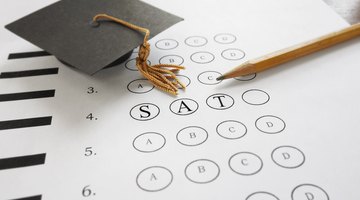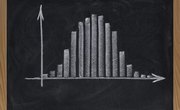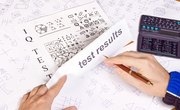The score that you get on your SAT does not determine what kind of student you are. Many students who do not do so well on their SAT might do extremely well in the other areas that colleges look at. Likewise, those who do very well on their SAT might not do as well with their GPA or be involved in extracurricular activities. The bottom line is that some students are simply good test-takers, while others are not.
That being said, even though your SAT score does not define you, interestingly enough, there are some things you can learn from it. For instance, did you know that at one time, your SAT score could be used to estimate your IQ? While the conversion is not so accurate anymore, it is a fun way to observe the connection.
What Does the SAT Measure?
According to educationplanner.org, the SAT test is used as a predictor to determine what a student is capable of learning. This is a bit different from the ACT, which is used to understand what the student already knows. Both the SAT and the ACT are standardized tests that are used by college admissions counselors to understand the student's college-readiness by comparing their score to a common data point that is used to assess all applicants.
What Is the SAT Score Range?
The SAT is scored on a scale between 400 and 1600, according to PrepScholar. 400 is the lowest score you can get on the SAT, and a 1600 is the highest score you can get, also commonly referred to as a "perfect score." The average SAT score is a a 1068, though, of course, some students will do better, and some will get a lower grade.
What Is Your IQ?
IQ stands for "Intelligence Quotient." The IQ test is a measurement of your intelligence, which is expressed as a number, according to 123test.com. In order to get this number, a person would have to take an IQ test, which is a series of questions designed to make this determination. Most of the questions involve critical thinking, logic and problem-solving skills.
The first version of the IQ test in the United States was developed by psychologist Lewis M. Therman, who took a test made by Alfred Binet in France and changed it to what is now the Simon-Binet scale at the beginning of the 20th century. Therman was a psychologist at the University of Stanford, and thus called the test the Stanford-Binet IQ Test, according to StanfordBinetIQtest.com. However, the IQ test has different names/variations, such at the Wechsler Adult Intelligence Scale or the Woodcock-Johnson Tests of Cognitive Abilities.
What Is an IQ Test Used For?
The IQ Test is not used just to see how "smart" someone is. It also has medical uses. According to StandfordBinetIQTest.com, the Standford-Binet test has practical uses, and it is used as a clinical assessment for patients with neurological issues. In a classroom setting, the Stanford-Binet IQ test can be used to appropriately place a student in the right classes or levels. In a workplace setting, the IQ test can be used to determine an employee's compensation, though, this is not a common thing.
IQ tests that are taken outside of these formal settings are usually done merely out of curiosity. While some adults may have taken an IQ test as a child, they probably would not remember their score and would be interested in taking the test again. In fact, there are also groups, like Mensa, dedicated to people with high IQs.
The IQ test, considered to be very accurate and reliable, is not taken into consideration nearly half as much as other factors when it comes to assessing an overall person's value or capabilities. Today, you look at people's strengths, their personality, their character and a variety of other different qualities to make a reasonable assessment.
What Is Considered an Average IQ score?
The Intelligence Quotient, or IQ, is measured on a scale from 55 to 160. The test has a mean score of 100, and a standard deviation of 15 points, so your score will fall within a range. The range your score falls into determines your level of intelligence based on the test's accuracy, according to StandfordBinetIQTest.com. 100 is considered the average IQ score.
If someone scores between a 145 and a 160, this is the highest range. This means that they are considered to be "very gifted" or "highly advanced." The next range, which is 130 to 144, indicates that the individual is "gifted" or "advanced."
A score between 120 and 129 shows "superiority," and a score between 110 and 119 means "high average." 80 to 89 means the test-taker is "low-average," and 70 to 79 means the individual "shows signs of borderline impairment." An IQ score of 70 or below indicates that the individual is intellectually disabled, according to National Academy of Sciences.
SAT Scores and IQ Range Relationship
Though your SAT score can have a big impact on whether or not you get admitted to your dream college, and your IQ score can scientifically say a lot about your intelligence, what they both do not define is who you are as a person. This is why colleges look at much more than your SAT grades when reviewing your application, and why your IQ score does not determine whether or not you can go to school or get a job.
That being said, interestingly enough, there was once a connection between the score you get from the SAT and IQ. At one time, before the SAT was redesigned in 2016, the questions asked in the SAT were closely related to those asked in an IQ test, according to PrepScholar. It used more "tricks" and "puzzles" similar to the IQ test and was thus very tricky. However, since the test has been changed, there is no longer a strong SAT IQ correlation between the two tests.
Where the IQ test looks at your ability to solve problems based on given information, the new SAT (and the ACT) tests your ability to solve problems based on learned information. Therefore, while you cannot study for the IQ test, you can certainly study for the SAT by practicing information that you learned in school.
How Do You Convert SAT Scores to IQ?
All this considered, you can still find many SAT IQ charts online that will compare your SAT score to your estimated IQ. It is important to remember that this is not as reliable as measuring your abilities or intelligence as the scores on their own. If anything, it is a better idea to use one of these charts if you took the SAT before it was redesigned in 2016.
Based on an example of one of these charts from IQComparisonsite.com, you can get an idea about this conversion. For instance, a 1600 on the SAT would be a 152.18 with a standard deviation of 15, and a 1010 would be a 109.46. Most of these tests tend to have a disclaimer. Even this chart says at the bottom, "Note: Mensa considers that scores from after January 31, 1994, 'No longer correlate with an IQ test.'" This indicates that even the pre-2016 SAT test was further away from its predecessors.
Related Articles
References
Writer Bio
Hana LaRock is a freelance content writer from New York, currently living in Mexico. She has spent the last 5 years traveling the world and living abroad and has lived in South Korea and Israel. Before becoming a writer, Hana worked as a teacher for several years in the U.S. and around the world. She has her teaching certification in Elementary Education and Special Education, as well as a TESOL certification. Hana spent a semester studying abroad at Tel Aviv University during her undergraduate years at the University of Hartford. She hopes to use her experience to help inform others. Please visit her website, www.hanalarockwriting.com, to learn more.











